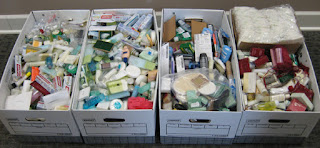Are you reaching that 80% of your members through mobile technology?
Advertising pro Sam Meers defines digital velocity as “the seemingly unstoppable phenomenon of digital communications growing at an increasing rate.” This insatiable desire for information has most associations embracing mobile technology as their means for staying in the game. The rationale is in the numbers. A 2010 survey conducted by the Realtor® association’s center for REALTOR® technology revealed:
- Nearly 80% of REALTORS® across the association use smartphones for business
- 68% use their phone to access productivity tools
- 33% use their phone to access news from the association’s magazine
So how do you use technology to become a critical part of the way a member does business?
Karen Gehle, CEO of KAR (Kansas) says, “While e-mail is a more frequent communications channel, it is not as effective as it once was. So we are pursuing new methods of communication for one main reason. We want KAR to be within a touch of a button for our members.
Our mobile app will give member easy access to the information they say they need the most: Education, Legislative updates, and Market Data. If we make it easy for members to access information, we deliver on our brand promise to deliver new knowledge in every member interaction. We believe we can accelerate the engagement curve of the new and other members segments by delivering on our commitment through mobile communications.”
An Evolving Tool
So what exactly does “mobile” include? The definition grows every day. Associations are incorporating mobile phone applications, USB flash drives, streaming video, text, QR codes and the mobile web into their technology offerings.
“We are stepping into mobile apps and texting for one very prominent reason: it’s where our members are," says Dawn Kennedy, CEO in Oklahoma City. “Members are relying on their smartphones more and more to access MLS, to email documents from Transaction Desk and to communicate with clients. Our leadership believes the use of mobile technologies will increase dramatically as GEN Y and the millennials become the primary buying segment. We want to be able to deliver member services in whatever media they choose, and our survey data verifies they are choosing smart phones.”
As you consider your mobile possibilities, remember this: knowing what is valuable to your members allows you to be relevant to them. Seek their input. They’ll help you validate the right direction for your mobile strategy.












